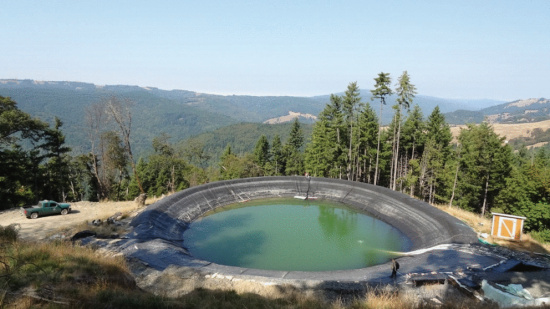Photo of an allegedly illegal pond, from the paper in BioScience. By Scott Bauer.
Here in Humboldt County, anyone paying even a tiny bit of attention knows the outlaw marijuana industry is wreaking havoc on the environment, but a new paper in the journal BioScience aims to spread that information to a larger audience.
Co-authored by 15 scientists, including local wildlife ecologist Dr. Mourad Gabriel and Fish and Wildlife environmental scientist Scott Bauer, the paper looks specifically at damage being done in the Eel River watershed, home to several rare state- and federally listed species, such as salmonids and the Pacific fisher. Destructive practices called out by the paper include clearing, grading, surface water diversions, pesticide pollution and wildlife poaching.
The paper uses the oft-repeated (and oft-disputed) claim that each marijuana plant requires six gallons of water per day during the June-October outdoor growing season, concluding that pot is “almost two times more ‘thirsty’ than wine grapes, the other major irrigated crop in the region.” Industry advocates have disputed similar claims.
After enumerating the environmental costs, the paper pivots to address poor government oversight of the industry, noting that “the semi-legal status of the medical [marijuana] market and the significant intermixing of the medical and black markets complicate regulation of the industry”
Regulators are profoundly outmatched and underfunded to combat the damage being done, the authors conclude. States that have legalized recreational use, on the other hand, are raking in tax revenues and using them in part to fund public health and education programs.
While the paper stops short of advocating full federal legalization of marijuana (explicitly, anyway), co-author Mary Power makes that very argument in an online interview with Yale’s Environment 360 blog.
“As long as there is a market that will pay enough to compensate for the brutally hard work they do to grow this stuff in forested mountains,” she says, “then it will keep growing.”
DOCUMENT: ”High Time For Conservation: Adding the Environment to the Debate on Marijuana Liberalization”

CLICK TO MANAGE